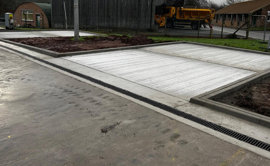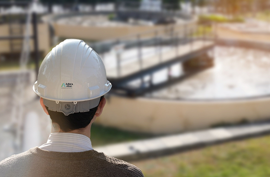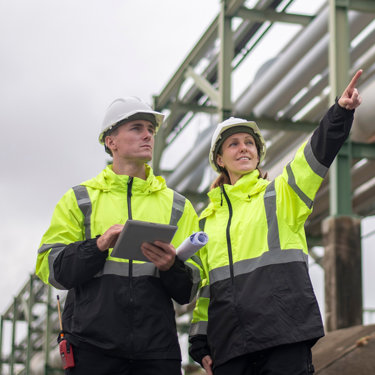Safeguard against pollution incidents by maintaining storage tanks, bunds and separators
Published: 22 March 2022
By: Shirley Miles, Head of Environmental Protection
Tanks, bunds, and separators are your first, second, and third line of defence if a pollution incident occurs. Regular maintenance of this infrastructure is essential to prevent environmental harm and keep assets working at optimum efficiency.
Under the Water Resources Act 1991 and The Environmental Permitting Regulations 2016, the onus is on operators to reduce the risk of pollution incidents – and avoid increasing fines, reputational damage, and personal liability for senior officers.
Partnering with a trusted environmental protection provider can help to make sure your critical infrastructure remains compliant.
Primary containment – take care of your storage tanks
In addition to performing weekly visual checks of storage tanks, valves, pipes, and pumps, enlist a qualified technician to conduct a detailed annual inspection and service of your storage facilities. The audit should assess asset condition, remove sludge, and highlight faults for immediate repair.
You should also establish a rolling schedule of proactive storage tank maintenance, delivered by an environmental risk professional.
Tank audits and inspections
Using the latest high-pressure or ultrasonic technology, skilled engineers and specialist welders test for leaks and structural concerns, repair faulty tanks, and provide full follow-up documentation.
NDT against API standards
Non-destructive testing (NDT) analysis methods evaluate the quality of materials, fabrication, and integrity of storage tanks, pipelines, and wells, without destroying their serviceability.
Storage tank lining
Effective storage tank lining protects against deterioration and resists water and chemicals, keeping your assets performing for the long term.
Storage tank cleaning
Specialist tank cleaners use proven man-entry and non-man-entry techniques to tackle requirements, such as changes of stored product, contamination, deterioration, decommissioning, transportation, or standard upkeep.
Secondary containment – keep bunding in top condition
Bund walls are built around areas where potentially polluting materials are handled, processed, or stored – and used to capture escaped substances and prevent releases into ground or water. All above-ground storage tanks (ASTs) should be bunded to provide secondary containment.
An effective bund maintenance programme relies on regular inspection and cleaning, ensuring your secondary containment system is structurally sound and free of contaminants.
Bund audit
Routine inspections of bund condition and performance identify defects at an early stage, allowing you to address issues before they compromise integrity.
Bund cleaning
Powerful vacuums extract water or leaked tank contents, before the entire structure is jet washed to achieve a complete clean, even in the most confined, inaccessible spaces.
Bund lining
Periodic bund lining reinforcement extends asset life by up to 20 years and provides durable, hardwearing protection against deterioration, degradation, and structural weaknesses.
Tertiary containment – proactively maintain separators
Tertiary containment minimises the consequences of a major incident if your first and second-line defences fail. An oil water separator (or oil interceptor) is a crucial component, designed to trap harmful light liquids before they enter the surrounding area.
Regular oil separator maintenance and cleaning keeps pollution prevention equipment in good working order and provides vital data for service log scrutiny during environmental inspections.
Separator alarms
Work with an experienced partner to supply, install, and service a suitable alarm system to monitor oil, silt, and liquid levels within your underground separators.
Separator inspection and maintenance
Schedule a rota of six-monthly ‘in-service’ inspections to check levels and functionality of key components. Follow up with a five-yearly integrity inspection to locate fractures, displacements and groundwater ingress.
Service and inspection records – demonstrating reasonable endeavour
Adhering to regular maintenance guidelines of your primary, secondary, and tertiary containment systems should reduce the enforcement imposed should a pollution event occur. Detailed inspection and service records will also show all reasonable endeavour has been taken to avoid the incident.
Collaborating with an environmental expert will keep you a step ahead of critical asset issues – and lessen the ecological and economic impact of a worst-case scenario.
More from our Knowledge Hub
 Case study
Case studyDecommissioning and redeveloping a mechanical transport fuel installation at Sennybridge Training Area
 News
NewsTwo prestigious wins at Water Industry Awards and Women in Utilities Awards 2025
 News
NewsCelebrating and supporting our veterans at the Forces in Business Awards 2025
 Insights
InsightsRebuilding trust in water: Interim recommendations from the Independent Water Commission
Environmental compliance today, creating a sustainable tomorrow
Helping you reduce risk to the environment and your operation by managing assets compliantly while achieving commercial, ESG, and net-zero goals.
Contact our experts
